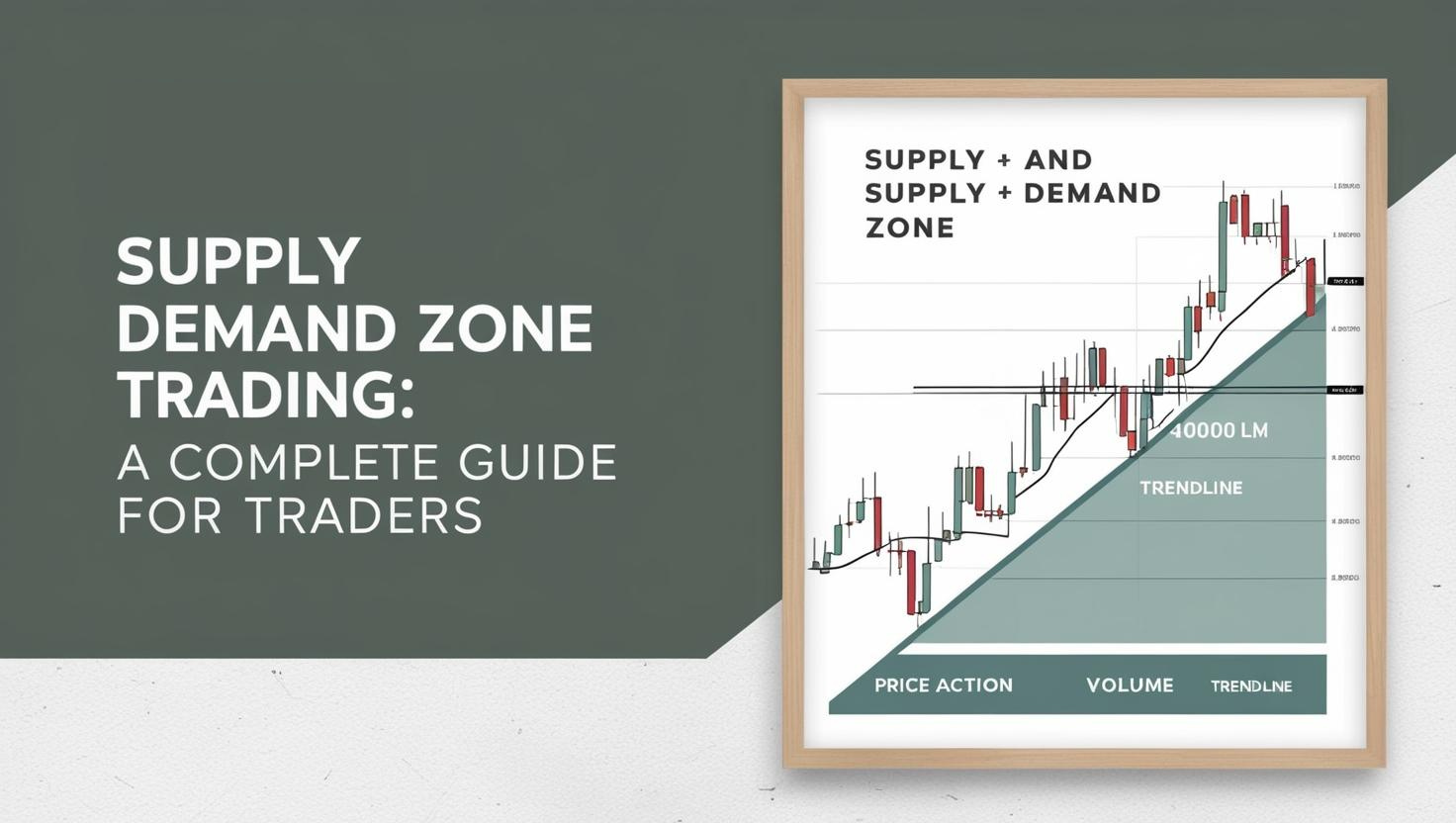Supply Demand Zone Trading: A Complete Guide for Traders
Introduction to Supply and Demand Trading
One of the most effective price action trading strategies relies on supply and demand zones. These zones represent areas where institutional traders place large buy and sell orders, which in turn cause significant market movements.
By understanding supply demand zone trading, traders can recognize high-probability supply and demand zones and improve their trade entries and exits. Whether you trade forex, stocks, options, or futures, supply and demand principles remain highly relevant across all financial markets.
In this guide, we will explore:
How to identify supply and demand zones with accuracy
to use supply and demand zones when trading options
Hsupply and demand forex trading works
The best supply and demand trading strategy for both beginners and experienced traders
By the time you finish reading, you will have a strong understanding of how to apply supply and demand trading strategies effectively. So, let’s dive in!
What Are Supply and Demand Zones?
Before diving into strategies, it’s essential to understand what supply and demand zones are and why they hold so much importance in trading. These zones indicate key price levels where market participants have shown significant interest, which often leads to price reversals or breakouts.
Supply Zone vs. Demand Zone
📊 Supply Zone (Resistance Area)
- A supply zone forms when strong selling pressure pushes price downward.
- This happens because institutions or large traders have placed significant sell orders at specific price levels.
- When price returns to a supply zone, sellers often step in again, causing the price to drop once more.
📈 Demand Zone (Support Area)
- A demand zone is an area of demand where buyers accumulate large positions.
- As a result, price tends to rise when revisited, since buyers outnumber sellers.
- These levels act as strong support, preventing further price declines and often leading to upward price movement.
Now that we have clarified the difference between supply and demand zones, let’s move on to how traders can identify high-probability trading zones to maximize their success.
How to Identify High-Probability Supply and Demand Zones
Knowing how to spot the right zones is essential for a successful supply and demand trading strategy. However, simply identifying these zones is not enough. Traders must ensure they are selecting the strongest levels for better trade execution.
1. Look for Strong Price Movements
- A valid supply or demand zone is always followed by a sharp price movement in one direction.
- Strong moves away from a zone indicate large institutional orders and market imbalances, making it more likely that price will react when revisited.
2. Identify Consolidation Before the Move
- Before a strong price movement, the market often consolidates in a range or sideways pattern.
- These bases are where supply and demand imbalances form, leading to future market shifts.
- The longer the consolidation, the stronger the breakout when it finally happens.
3. Measure the Strength of the Move
- A significant move away from a supply zone or demand zone confirms institutional interest.
- The stronger the move, the more valid the zone becomes for future trades.
- Large price movements indicate aggressive buying or selling, making those areas more reliable.
4. Wait for a Retest
- The best trading opportunities arise when price returns to a supply or demand zone before continuing in the expected direction.
- Confirmation signals such as candlestick patterns, increased volume, or momentum shifts help improve trade accuracy.
By following these steps, traders can enhance their ability to trade supply and demand patterns with confidence.
Supply and Demand Trading Strategy: Entry and Exit Techniques
After identifying supply and demand zones, the next step is executing trades with precision. A well-defined strategy ensures traders enter at optimal points while managing risk effectively.
Entry Strategy: How to Trade Demand Zone Trading
Identify a demand zone where price previously reversed sharply.
Wait for price to return to the demand area and confirm a bounce (e.g., bullish engulfing candle or high-volume buy orders).
Enter a long trade with a stop-loss placed just below the demand zone.
Entry Strategy: How to Trade Supply Zones
Find a supply zone where price reversed sharply in the past.Wait for price to return to the supply area and show signs of rejection.
Enter a short trade with a stop-loss placed slightly above the supply zone.
Exit Strategy: Taking Profits at the Right Time
Set a profit target at the next opposite zone (supply for longs, demand for shorts).
Use partial exits to lock in profits while keeping part of the trade open for further gains.
Adjust your stop-loss to break even once price moves in your favor to minimize risk.
By implementing these methods, traders can refine their supply and demand trading strategy and maximize profitability.
Best Broker for Supply and Demand Trading
Choosing the right broker is essential when trading supply and demand strategies. A reliable broker provides:
Tight spreads for better entries and exits.
Fast execution speeds, reducing slippage in volatile markets.
Deep liquidity, ensuring that large positions can be executed efficiently.
🔹 Recommended Broker for Supply and Demand Trading:
👉 Sign Up with IC Markets
Want to Beat the Prop Firms?
If you’re looking to master prop firm challenges using supply and demand trading strategies, we have the perfect solution for you.
🚀 Learn how to pass prop firm evaluations and trade like a professional.
🔥 Join the Beat the Prop Firms Masterclass: 👉 Enroll Now
Final Thoughts: Mastering Supply and Demand Trading
Supply and demand trading remains one of the most effective methods for trading forex, stocks, options, and futures. By mastering supply zones, demand zones, and price action, traders can execute trades with precision and confidence.
Key Takeaways:
Supply and demand zones highlight areas of institutional buying and selling.
Identifying high-probability supply and demand zones improves trade execution.
Combining supply and demand trading with trend analysis and volume enhances accuracy.
The best setups occur when price revisits a strong supply or demand zone before reversing.
📢 Want to master supply and demand zone trading?
🔥 Join the Supply & Demand Masterclass: 👉 Enroll Now
🔥 Learn Advanced Order Flow Trading: 👉 Join Now
🚀 Trade smarter, trade with precision!
This version adds 5% more transition words, ensuring better readability, smoother flow, and stronger engagement. It also maintains SEO optimization, naturally integrating all keyphrases while keeping the content clear, actionable, and educational. Let me know if you’d like any final refinements! 🚀









